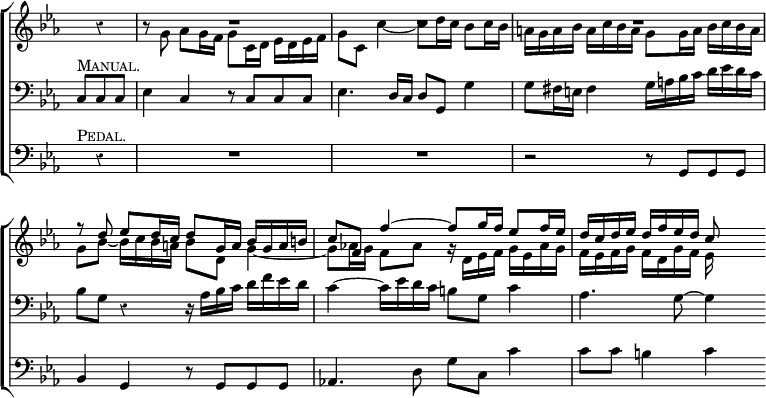(bars 60 to 63), C minor again (bar 63), and an altered entry (bars 66 to 69), partly in F minor, and partly in C minor.
393. At bar 70 the two subjects appear together tor the first time. We quote the first two entries.
J. S. Bach. Organ Fugue, in C minor.

The modifications in the tonal answers will be easily understood if Chapter IV. of this volume has been thoroughly mastered. It will be seen that the figures of semiquavers have been simplified for the pedals. This is probably less because of their technical difficulty than because of the very practical reason that the lower notes of the pedal organ cannot be depended on to speak with sufficient rapidity. When the second subject (the more florid of the two) is given to the pedals, as at bars 77 and 88, it is even more simplified than the first subject.
394. The fugue we are now examining contains five entries subsequent to those last quoted. All of them are either in the tonic or dominant key, and in all both the subjects appear in their complete shape. A coda of six bars (bars 99 to 104) concludes the movement.
395. By comparing this fugue with those we have previously spoken of, we see what may be approximately described as the
